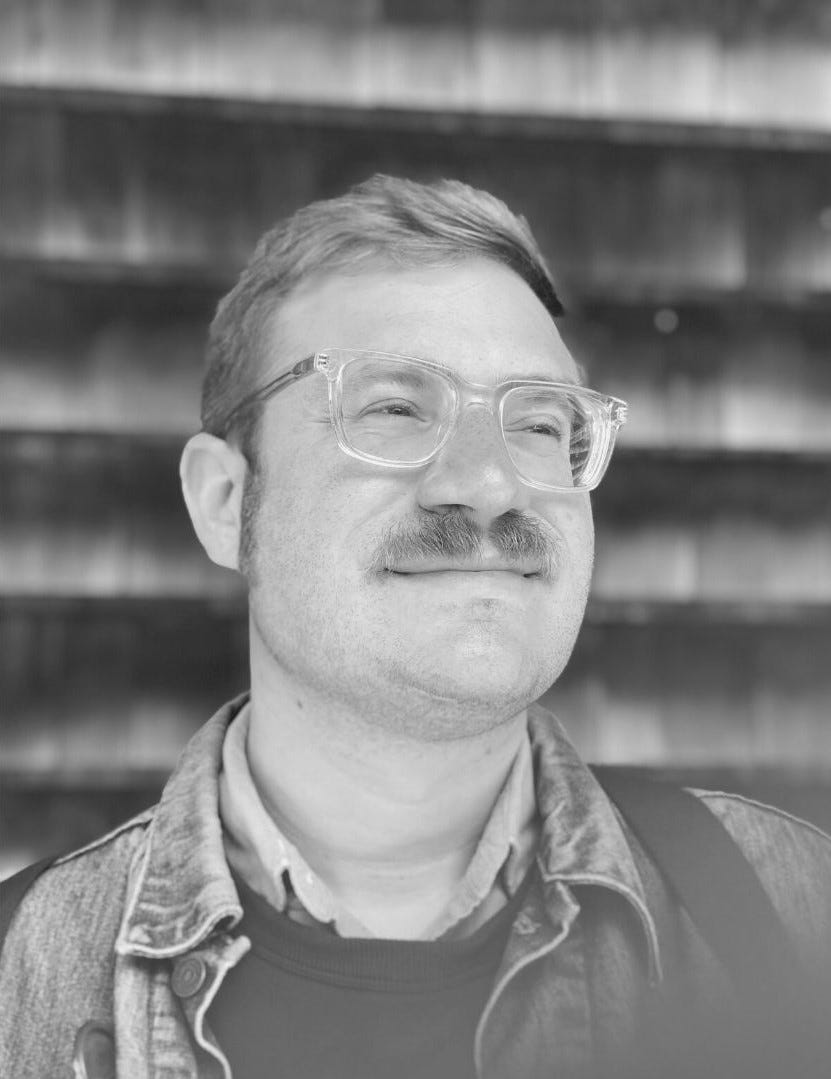Meet the Poets: T. S. Leonard
T. S. talks to us about his poem "The Trojan", what disco means to his work, and how he approaches writing a new poem
You can read T. S. Leonard’s poem “The Trojan”, and listen to him read it himself, in Issue One of the Seaford Review.
What can you tell us about this poem?
There’s a recurring character throughout my work, the Time Traveler, who pops up in different eras to observe or express some facet of the historic queer experience. The Trojan started as a piece about AIDS activists in the 1980s, with that moment at the end: “dinners after marching/kissing on the marble steps…”. I was thinking about ACT UP kiss-ins and the tragic, necessary camaraderie forged through shared grief and collective action. But the longer I lingered in the scene, the deeper back it went, and there was something about this ancient echo of battle and warfare that seemed to hold something, unfortunately, eternal. How many times has the Time Traveler seen his brothers and his lovers perish for something so senseless as war? How can he keep persisting? Forever, and with love.
What poets and poems are you in dialogue with?
For the last couple of years I’ve had my strongest ongoing dialogue with the work of Tim Dlugos, whose poems in the 1970s and early 1980s are often very wry and wily with their humor and references, but who wrote, after receiving his HIV diagnosis, some of the most soulful, generous poems of the late century. His poems Healing the World from Battery Park and Ordinary Time and G-9 are just stunning—urgent, wide-open, pained but gorgeous—and essential documents from their impossible time.
What is your writing practice?
It depends. It changes. It erodes. It’s messy, or meticulous. Usually it starts with a piece of art or a song or someone else’s poem. Often, it’s about opening wide and swallowing whatever comes in, and catching what sticks. If I’m being really good and intentional, I’ll read a few poems and then take a long walk, trying to let the world in a bit. Plugging things into my Notes app. I try to sit at the kitchen table and with my notebook and write automatically for as long as I can. Once I start getting fussy with possible line breaks, I know it’s time to migrate to my laptop and get lost.
Usually it starts with a piece of art or a song or someone else’s poem. Often, it’s about opening wide and swallowing whatever comes in, and catching what sticks
What’s on your bedside table?
My ideal reading diet, prescribed to anyone who asks, is to always be toggling between a novel, some poetry, and a book of nonfiction. It keeps things fizzy. Right now I’m reading Nicolas Pages by Guillaume Dustan, which is like a gay tornado from 1999 France—I don’t know what it is yet exactly, but it’s good—and Victoria Chang’s new collection With My Back to the World. I’m just diving into The Life of Poetry by Muriel Rukeyser, which first appeared in 1949 but is every bit as timely now: “Always we need the audacity to speak for more freedom, more imagination, more poetry with all its meanings.” I mean, come on. Don’t we ever.
What song helps us get to know you better?
Bettye LaVette’s “Doin’ the Best That I Can” (Walter Gibbons 12” Mix). Eleven minutes of pure percussive fantasia, stretched to infinity when I put it on repeat for a writing soundtrack. Disco for the soul.
I came to the song through my love for Arthur Russell, another experimental producer and contemporary of Gibbons, whose meditative approach to dance music (repetition and release, bending time) has been a big influence on my poetry. The lyrics here are about a scorned lover trying to move on, but in Gibbons’s elongated remix we get Bettye (and her background singers) repeating the title line over and over again, and it becomes a bit like a mantra. Perfect motivation for facing the page and writing as best you can.




